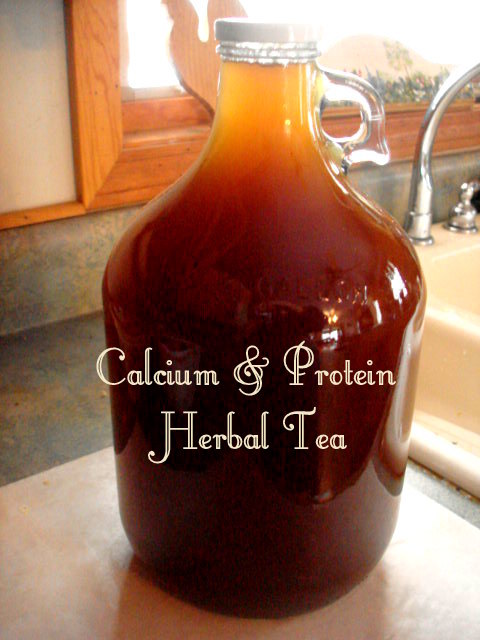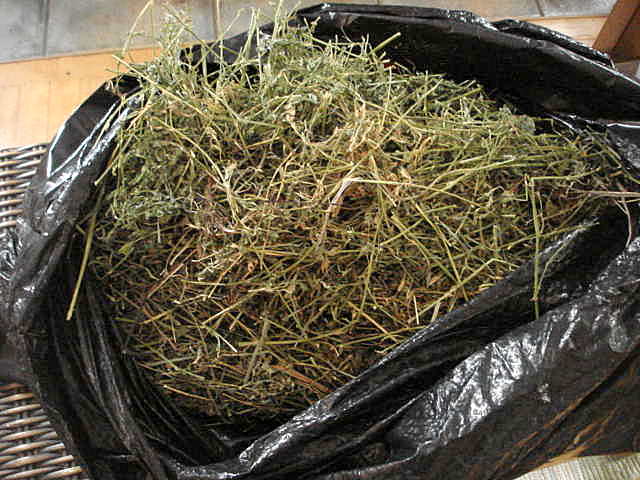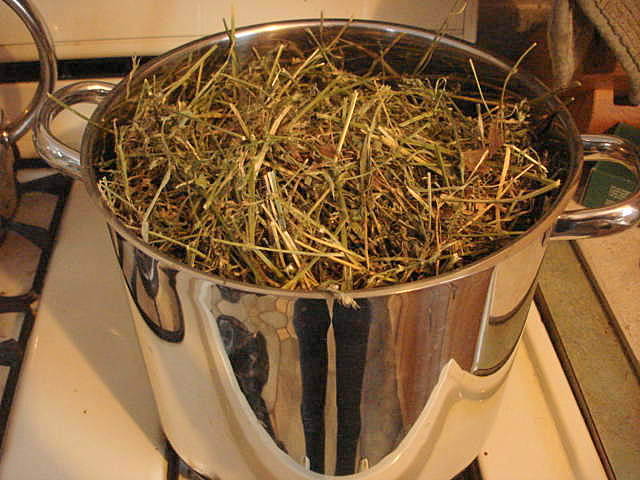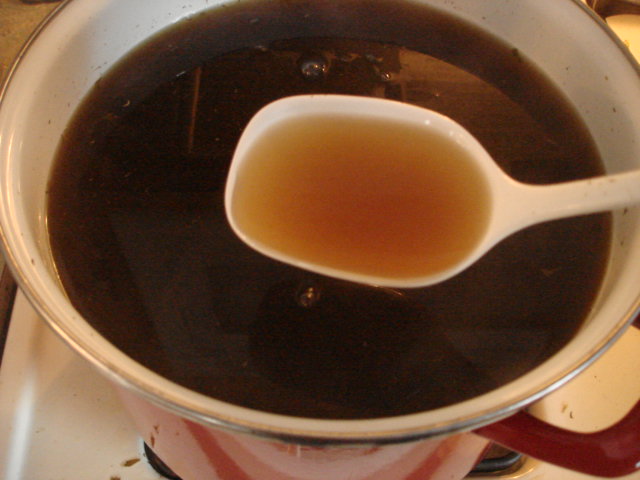 |
|
Calcium and Protein Herbal Tea  Once you become a chicken owner, you soon find the main components discussed in a chicken's diet are protein and calcium. We learn the varying levels of protein needed for the early growing stages, and the calcium levels needed for an adult bird, particularly laying hens. Calcium is the easiest of the two to add, since we have options to add by free choice feeding, like oyster shell, limestone and egg shell.Calcium is important for bones and eggs shell building for the hens. However, egg shells and limestone may move through the digestive system too quickly for good absorption. Protein is essential for growth and tissue repair, and the main component of feathers. Different protein percentage levels are recommended for different age groups, with the highest percent for the youngest chicks, tapering off to the lowest once chickens are adults and theoretically free ranging and supplementing with bugs, (however which does not address what we do during the winter). The protein in feed mainly comes from grains like barley, corn, wheat, and soy beans. Oats are commonly used as animal feed, but the protein level is not high. The more processed oats you use, the less protein. It is best to use whole oat seed. With the advent of GMO foods, especially in a majority of soy beans and corn, many organic chicken keepers are looking for alternatives. And, even if we make our own feed, natural grains come with phytic acid and enzyme inhibitors that protect the seed for its own propagation, but those things are not so great for digestion. This can be offset with fermenting your grain. So nutrient absorption may be low as well with whole grains and seed. To utilize protein and calcium properly, we must also make sure there are sufficient levels of phosphorus, magnesium and Vitamin D present in the body. With prepackaged and formulated feed, we don't think about that at all. When we start adding "treats" or making up our own mixes, we need to think about this. Many people shy away from making their own feed mixes because this can get quite complex. Or people simply don't know and give their flock scraps thinking it all works out somehow. Let me put this out there. Unbalanced diets, over time, WILL cause health issues in your flock. But, I am also here to tell you there is a really easy way to add protein and calcium to your flock already balanced by mother nature. We have some herbal options that can supplement protein and calcium quite nicely. Actually all plant foods offer some protein, but some herbs can really excel in this area.So letís take a look at some of these herbs that have protein, calcium, magnesium, phosphorus and Vitamin D. Three herbs I will talk about will have them all, while I also offer another herb combination that rounds out the bill.
Protein and Calcium Tea When I started developing herbal protocols for my poultry, I decided the best way to supplement is through their drinking water, making an herbal tea. Your flock drinks more water than they eat food, it is easily to assimilate, and they cannot pick through it to eat only certain parts like they do with food. I mix in their drinking water for as long as I think they need it. An application of the tea even once a month it will be of great benefit for your poultry. Particularly during cold weather, this tea helps them tremendously when the cold temps sap their energy while they try to stay warm. It helps growing bodies with chicks, and can support a laying or broody hen. It will boost protein and calcium levels to work in synergy to help their core body functions. Alfalfa is readily available, and I use fresh alfalfa hay. I found one flake of hay will yield about 3 gallons of tea. (Otherwise I use 1 lb. dried herb per 3 gallons of water). I put a flake in a large bag to crunch it for a more manageable size to pack into a large 5 gallon pot.  I fill the pot with water up to about 1 inch from the brim. I bring it to a boil, then let it gently simmer for one hour. Turn off the heat and let cool. Strain with a colander.   Source: |